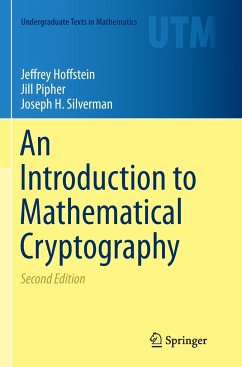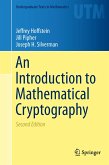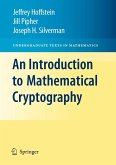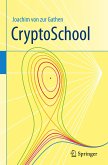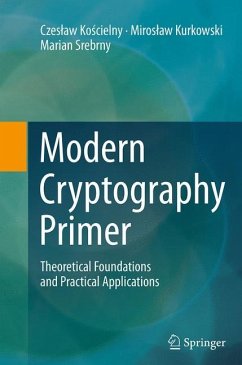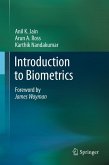This self-contained introduction to modern cryptography emphasizes the mathematics behind the theory of public key cryptosystems and digital signature schemes. The book focuses on these key topics while developing the mathematical tools needed for the construction and security analysis of diverse cryptosystems. Only basic linear algebra is required of the reader; techniques from algebra, number theory, and probability are introduced and developed as required. This text provides an ideal introduction for mathematics and computer science students to the mathematical foundations of modern cryptography. The book includes an extensive bibliography and index; supplementary materials are available online.
The book covers a variety of topics that are considered central to mathematical cryptography. Key topics include:
classical cryptographic constructions, such as Diffie-Hellmann key exchange, discrete logarithm-based cryptosystems, the RSA cryptosystem, anddigital signatures;
fundamental mathematical tools for cryptography, including primality testing, factorization algorithms, probability theory, information theory, and collision algorithms;
an in-depth treatment of important cryptographic innovations, such as elliptic curves, elliptic curve and pairing-based cryptography, lattices, lattice-based cryptography, and the NTRU cryptosystem.
The second edition of An Introduction
to Mathematical Cryptography includes a significant revision of the material on digital signatures, including an earlier introduction to RSA, Elgamal, and DSA signatures, and new material on lattice-based signatures and rejection sampling. Many sections have been rewritten or expanded for clarity, especially in the chapters on information theory, elliptic curves, and lattices, and the chapter of additional topics has been expanded to include sections on digital cash and homomorphic encryption. Numerous new exercises have been included.
The book covers a variety of topics that are considered central to mathematical cryptography. Key topics include:
classical cryptographic constructions, such as Diffie-Hellmann key exchange, discrete logarithm-based cryptosystems, the RSA cryptosystem, anddigital signatures;
fundamental mathematical tools for cryptography, including primality testing, factorization algorithms, probability theory, information theory, and collision algorithms;
an in-depth treatment of important cryptographic innovations, such as elliptic curves, elliptic curve and pairing-based cryptography, lattices, lattice-based cryptography, and the NTRU cryptosystem.
The second edition of An Introduction
to Mathematical Cryptography includes a significant revision of the material on digital signatures, including an earlier introduction to RSA, Elgamal, and DSA signatures, and new material on lattice-based signatures and rejection sampling. Many sections have been rewritten or expanded for clarity, especially in the chapters on information theory, elliptic curves, and lattices, and the chapter of additional topics has been expanded to include sections on digital cash and homomorphic encryption. Numerous new exercises have been included.
"This book explains the mathematical foundations of public key cryptography in a mathematically correct and thorough way without omitting important practicalities. ... I would like to emphasize that the book is very well written and quite clear. Topics are well motivated, and there are a good number of examples and nicely chosen exercises. To me, this book is still the first-choice introduction to public-key cryptography." (Klaus Galensa, Computing Reviews, March, 2015)
"This is a text for an upper undergraduate/lower graduate course in mathematical cryptography. ... It is very well written and quite clear. Topics are well-motivated, and there are a good number of examples and nicely chosen exercises. ... An instructor of a fairly sophisticated undergraduate course in cryptography who wants to emphasize public key cryptography should definitely take a look at this book." (Mark Hunacek, MAA Reviews, October, 2014)
"This is a text for an upper undergraduate/lower graduate course in mathematical cryptography. ... It is very well written and quite clear. Topics are well-motivated, and there are a good number of examples and nicely chosen exercises. ... An instructor of a fairly sophisticated undergraduate course in cryptography who wants to emphasize public key cryptography should definitely take a look at this book." (Mark Hunacek, MAA Reviews, October, 2014)
From the reviews:
"The book is devoted to public key cryptography, whose principal goal is to allow two or more people to exchange confidential information ... . The material is very well organized, and it is self-contained: no prerequisites in higher mathematics are needed. In fact, everything is explained and carefully covered ... . there is abundance of examples and proposed exercises at the end of each chapter. ... This book is ideal as a textbook for a course aimed at undergraduate mathematics or computer science students." (Fabio Mainardi, The Mathematical Association of America, October, 2008)
"This book focuses on public key cryptography ... . Hoffstein, Pipher, and Silverman ... provide a thorough treatment of the topics while keeping the material accessible. ... The book uses examples throughout the text to illustrate the theorems, and provides a large number of exercises ... . The volume includes a nice bibliography. ... Summing Up: Highly recommended. Upper-division undergraduate through professional collections." (C. Bauer, Choice, Vol. 46 (7), March, 2009)
"For most undergraduate students in mathematics or computer science (CS), mathematical cryptography is a challenging subject. ... it is written in a way that makes you want to keep reading. ... The authors officially targeted the book for advanced undergraduate or beginning graduate students. I believe that this audience is appropriate. ... it could even be used with students who are just learning how to execute rigorous mathematical proofs. ... I strongly believe that it finds the right tone for today's students ... ." (Burkhard Englert, ACM Computing Reviews, March, 2009)
"The exercises and text would make an excellent course for undergraduate independent study. ... This is an excellent book. Hoffstein, Pipher and Silverman have written as good a book as is possible to explain public key cryptography. ... This book would probably be best suited for a graduate course that focused on public key cryptography, for undergraduate independent study, or for the mathematician who wants to see how mathematics is used in public key cryptography." (Jintai Ding and Chris Christensen, Mathematical Reviews, Issue 2009 m)
"The book is devoted to public key cryptography, whose principal goal is to allow two or more people to exchange confidential information ... . The material is very well organized, and it is self-contained: no prerequisites in higher mathematics are needed. In fact, everything is explained and carefully covered ... . there is abundance of examples and proposed exercises at the end of each chapter. ... This book is ideal as a textbook for a course aimed at undergraduate mathematics or computer science students." (Fabio Mainardi, The Mathematical Association of America, October, 2008)
"This book focuses on public key cryptography ... . Hoffstein, Pipher, and Silverman ... provide a thorough treatment of the topics while keeping the material accessible. ... The book uses examples throughout the text to illustrate the theorems, and provides a large number of exercises ... . The volume includes a nice bibliography. ... Summing Up: Highly recommended. Upper-division undergraduate through professional collections." (C. Bauer, Choice, Vol. 46 (7), March, 2009)
"For most undergraduate students in mathematics or computer science (CS), mathematical cryptography is a challenging subject. ... it is written in a way that makes you want to keep reading. ... The authors officially targeted the book for advanced undergraduate or beginning graduate students. I believe that this audience is appropriate. ... it could even be used with students who are just learning how to execute rigorous mathematical proofs. ... I strongly believe that it finds the right tone for today's students ... ." (Burkhard Englert, ACM Computing Reviews, March, 2009)
"The exercises and text would make an excellent course for undergraduate independent study. ... This is an excellent book. Hoffstein, Pipher and Silverman have written as good a book as is possible to explain public key cryptography. ... This book would probably be best suited for a graduate course that focused on public key cryptography, for undergraduate independent study, or for the mathematician who wants to see how mathematics is used in public key cryptography." (Jintai Ding and Chris Christensen, Mathematical Reviews, Issue 2009 m)

